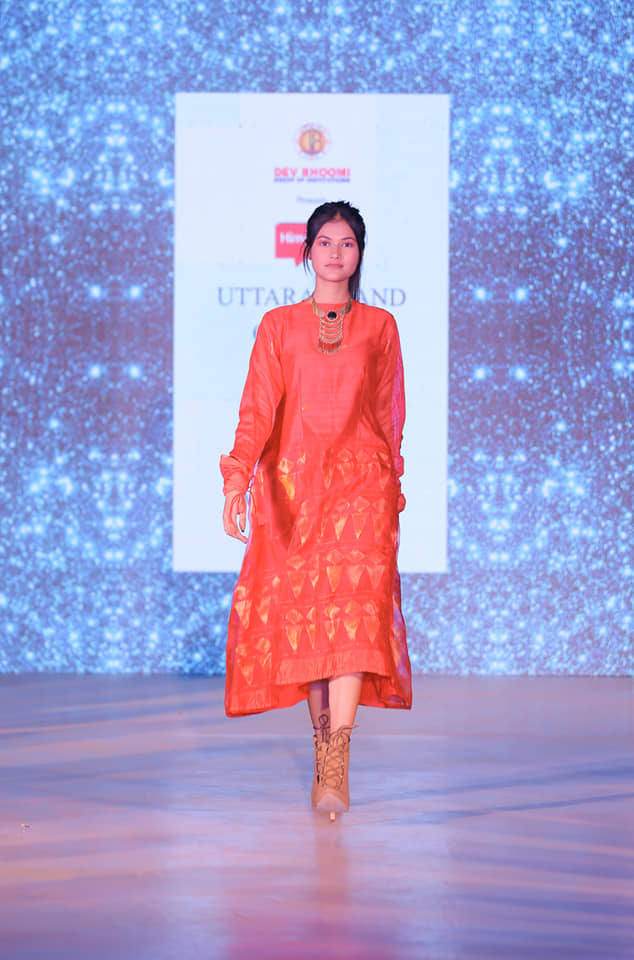Fashion Designer Ankita Roy is a Textile enthusiast and Fashion Designer who has just launched her label at Uttarakhand Couture Week Season 3. After graduating from Jadavpur University, Kolkata with B.Sc. (Hons.) In Textile Science, Clothing, and Fashion Studies, she did her P.G. Diploma from NIFT, Kolkata in Fashion and Clothing Technology. In that way, she learned both Textiles and Fashion.

Designer Ankita Roy Design Philosophy
She believes in the saying “Art has always inspired Fashion since times immemorial”. As she talks about her clothing line, she says, she creates “Handloom”. It is everything about weaving our own fabrics with skilled weavers from West Bengal and other parts of India.

This year’s collection “TARNI” is symbolic of an Indigenous local weave called JAMDANI from West Bengal. It is traditional folklore being woven in the region for ages. It is a supplementary weft technique of weaving, where the motifs are produced by an extra weft, in addition to the standard weft that holds the warp threads together. The standard weft creates a fine, sheer fabric while the supplementary weft with thicker threads adds intricate patterns to it. Each supplementary weft motif is added separately by hand using individual spools of thread.

The result is a complex mix of different patterns that appear to float on the surface, hence the name “TARNI”, which means to float freely on the surface in Sanskrit. The collection comprises very basic fusion silhouettes in a bright Indian palette. Basically, it’s all about sheer, flowy, rooted outfits which I expect will be liked by art and handloom lovers and others too.

Basic flattering cuts with the amalgamation of bright colors work wonders for Indian evening get-togethers. Complete silk ensembles with gold-tested zari accents enhance the look of the outfits.
So, once the whole yardage of fabric is woven then they come to the cutting table in the workshop for the outfits to actually get stitched and finished. The whole process is time-consuming as it takes near about a month for the weaver to weave the specified yardage. Even before that, geometric floral motifs are developed on paper. After all these steps the garment is actually ready for sale. This process of converting thoughts to paper arts and then to eventual outfits gives an amazing satisfaction.

So, people, it’s time to make a fashion statement with intricate handloom pieces which also provide our skilled weavers and kaarigars their daily bread.

